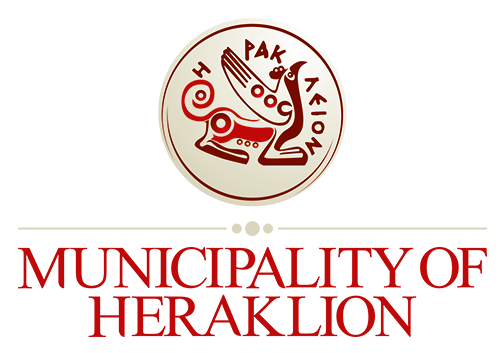Visit Profitis Ilias, built at the foot of the Rokka hill, a village chosen for the reconstruction of the “capital” of Crete after the Byzantine reconquest of the island in 961. Climb to the fortress, Kanli Kastelli (Bloody Fortress), named after the bloodshed of the Turks in the area by the Venetian Cretans (1647). Take a tour of the alleys of the village, see the church of the same name, cool off at Mikri Fontana and enjoy your coffee or try traditional delicacies in one of the cafes or ouzeri taverns. If you are in the area on July 19 or 20, do not forget to go to the festival organized in honor of Elijah (Profitis Ilias)! You will have the opportunity to try meat accompanied by local wine, listen to Cretan music and of course dance.
Monuments
- Mochopidaki-Xidaki residence which has been characterized as a work of art and is the only one in the area that has morphological elements of an urban house, but also architectural solutions that meet the needs of a rural home. The house was built in 1908.
- Mikri Fontana (=Small Fountain). This is an old fountain next to which there is a laundry basin that will remind you of the way housework was done in the past. The inhabitants used pitchers to carry water from the fountain for the needs of their household, while the women went and washed their clothes there.
- Fortress Temenos or Rokka or Castle of Nikiforos Fokas or Kanli Kastelli, south of Profitis Ilias, with impressive view in all directions. Nikiforos Fokas chose to set up the Byzantine capital of the island here. According to the archeological excavations of Sp. Marinatos, the ancient city of Lykastos was located here, which Homer mentions as a city from where young men were sent to fight the Trojans on the side of the Greeks.
- Archaeological site of Lykastos, 2 km away from Kanli Kastelli. The archaeologist, Spyridon Marinatos, discovered the remains of a Minoan settlement with evidence of a palace building. Important finds were found in all places, such as bell-shaped figurines. Today, apart from the scattered sherds, there is nothing reminiscent of the ancient city, but you can admire the wonderful natural landscape and move on towards the castle of Temenos.
Scenic Routes
- “Diakos’ cells” cave northeast of Profitis Ilias, near the archeological site of Vitsila. The cave is located at an altitude of 300m., under a rock. It is worth noting that this cave is an ideal habitat for a subspecies of badger found only in Crete, locally known as Arkalos.
- Profitis Ilias gorge, is rich in fossils and is crossed by a river, forming a natural border between the areas of Temenos and Paliani.
Monasteries- Temples
- Church of Profitis Ilias. Visit the central church of Profitis Ilias and Panagia Evangelismou built in 1887, after which the village took its name.
- Church of Virgin Mary Kardiotissa. Ascend to the place Xeri Kara, just outside the settlement of Profitis Ilias. The chapel of Virgin Mary Kardiotissa was built in 1976 in a cavity where an ancient tomb existed in the past.
- Church of Virgin Mary at the place “Kaki Skala” The church has been built on a place, where a sacred cave existed and is kept in very good condition.
Gastronomy
The area is famous for the production of olive oil and wine, so do not forget to visit the winery of the area, located a short distance from the Minoan settlement in Vathipetro, where the oldest wine press (4,000 years) of Minoan Crete was found. It is also interesting to visit the olive oil production and bottling plant in the area, where you will see the process of olive oil extraction, one of the gastronomic treasures of Crete.
Household-Traditional Occupations
In Profitis Ilias you will have the opportunity to see up close the profession of shoemaker, which tends to disappear in modern times.








